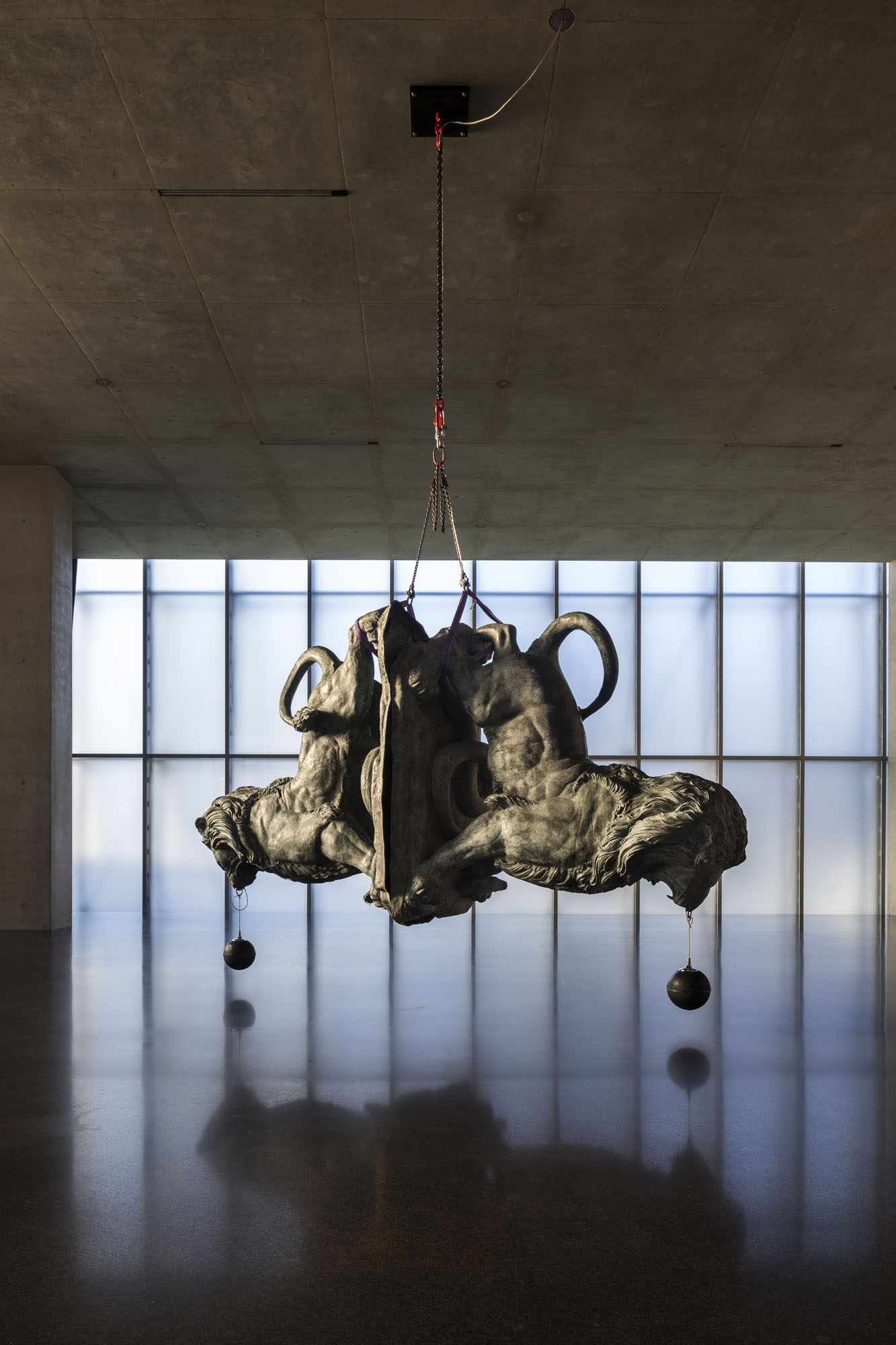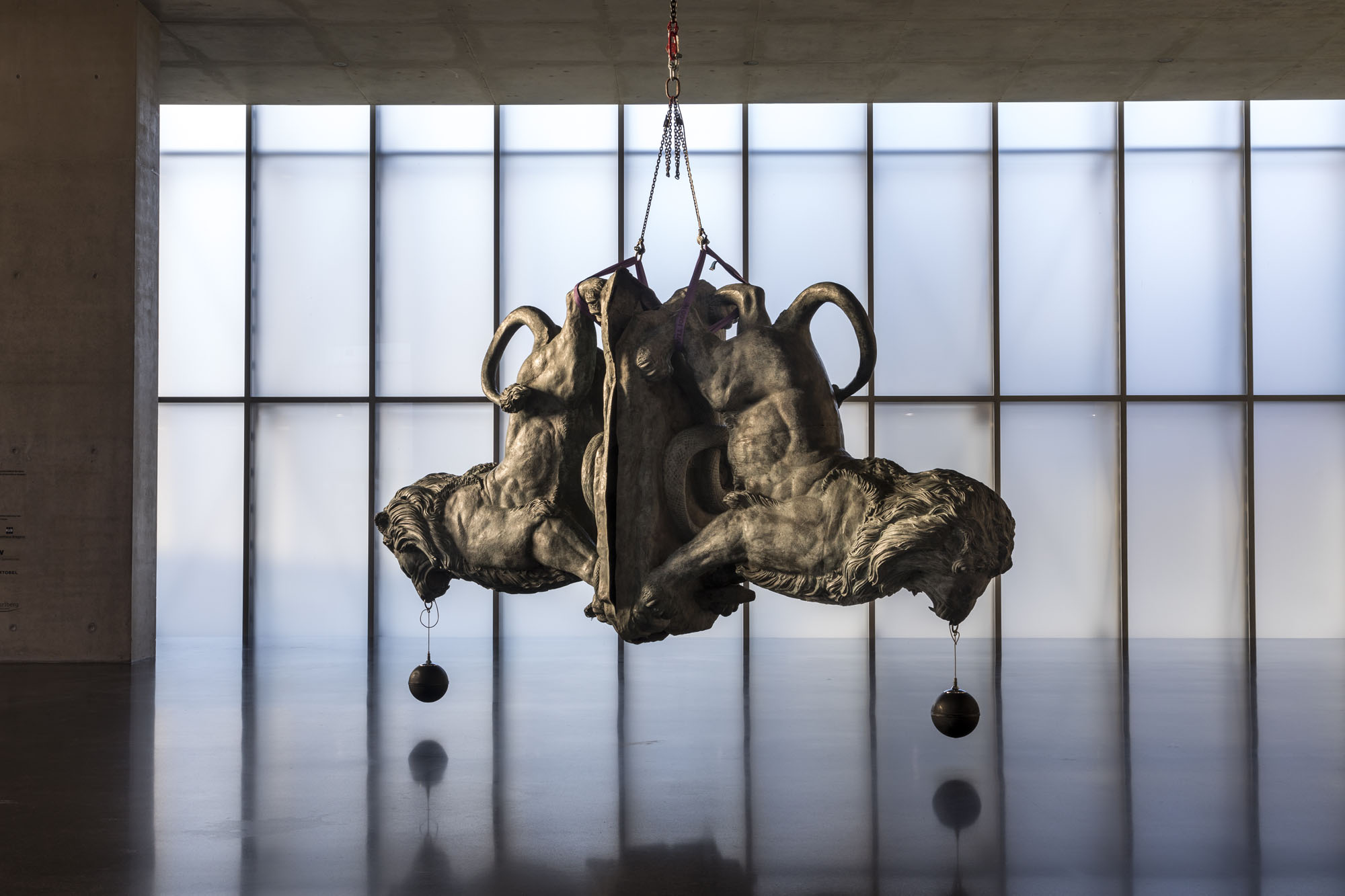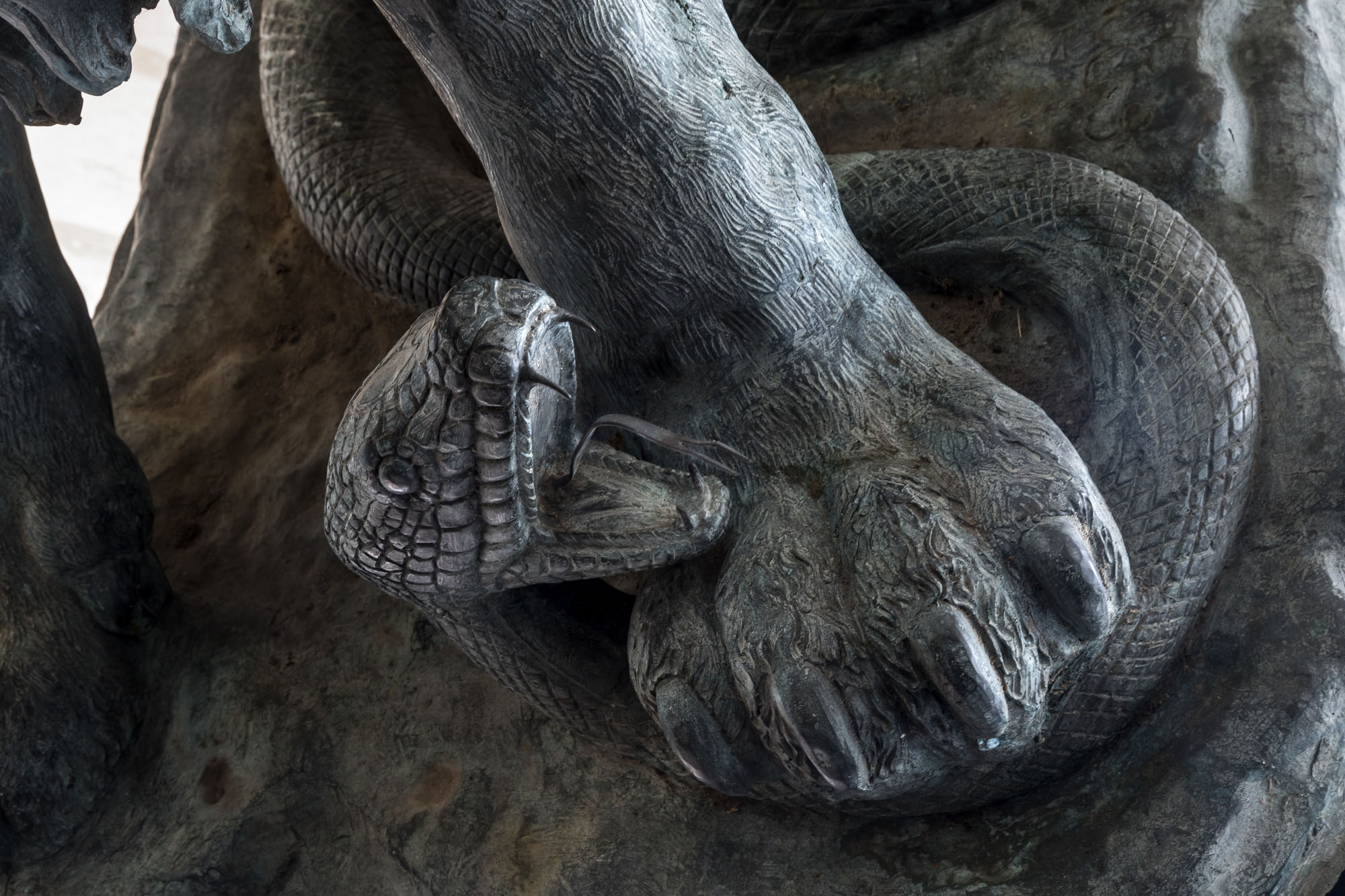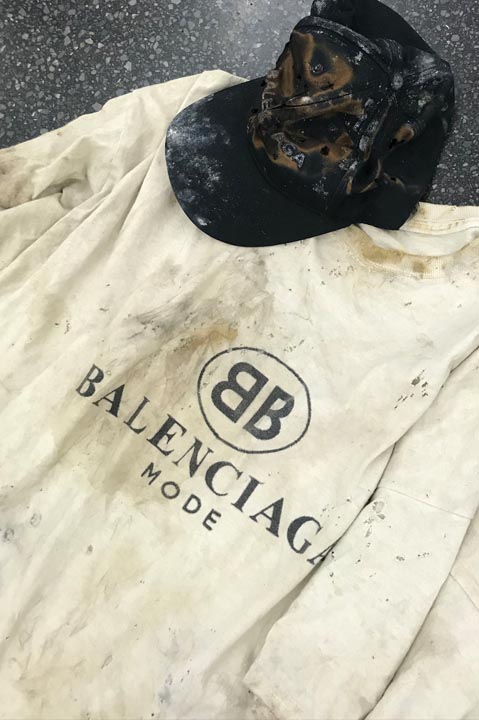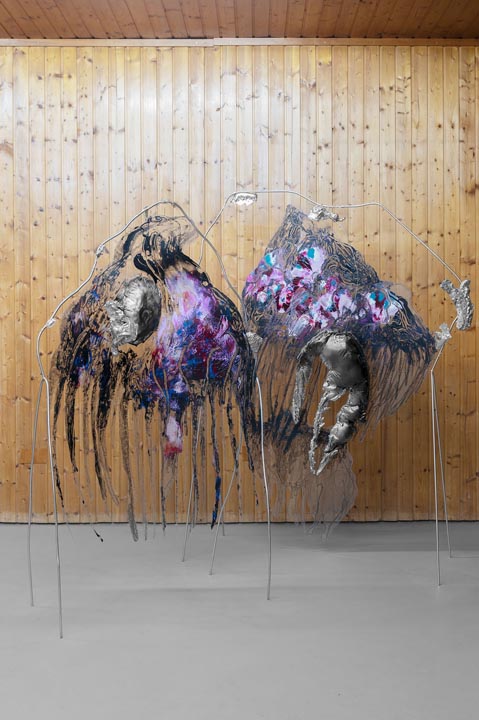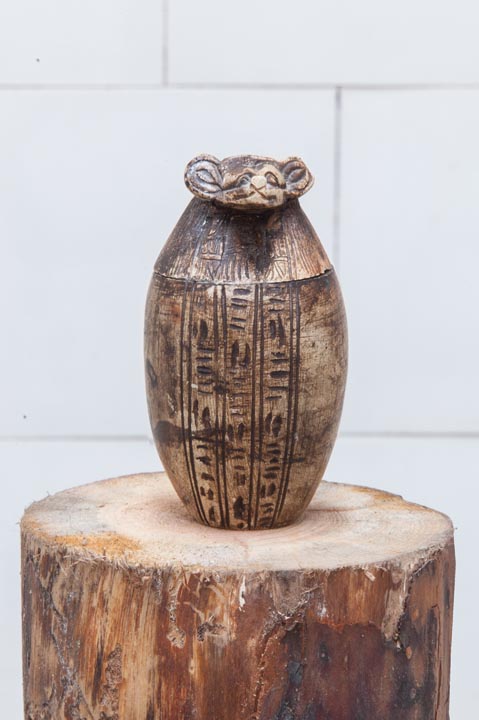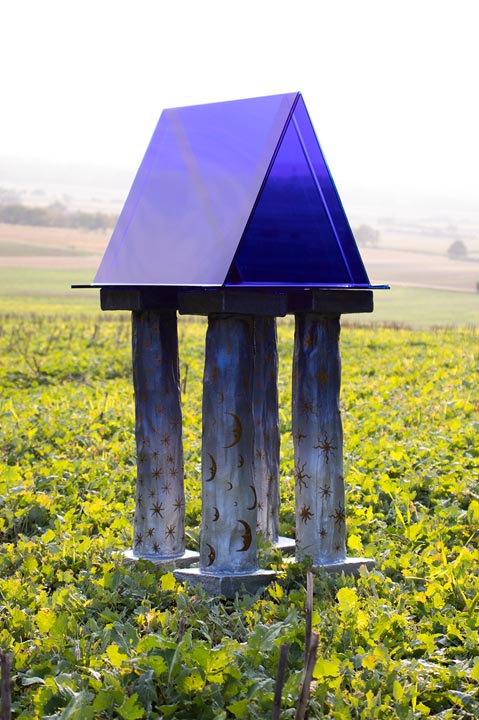OFLUXO
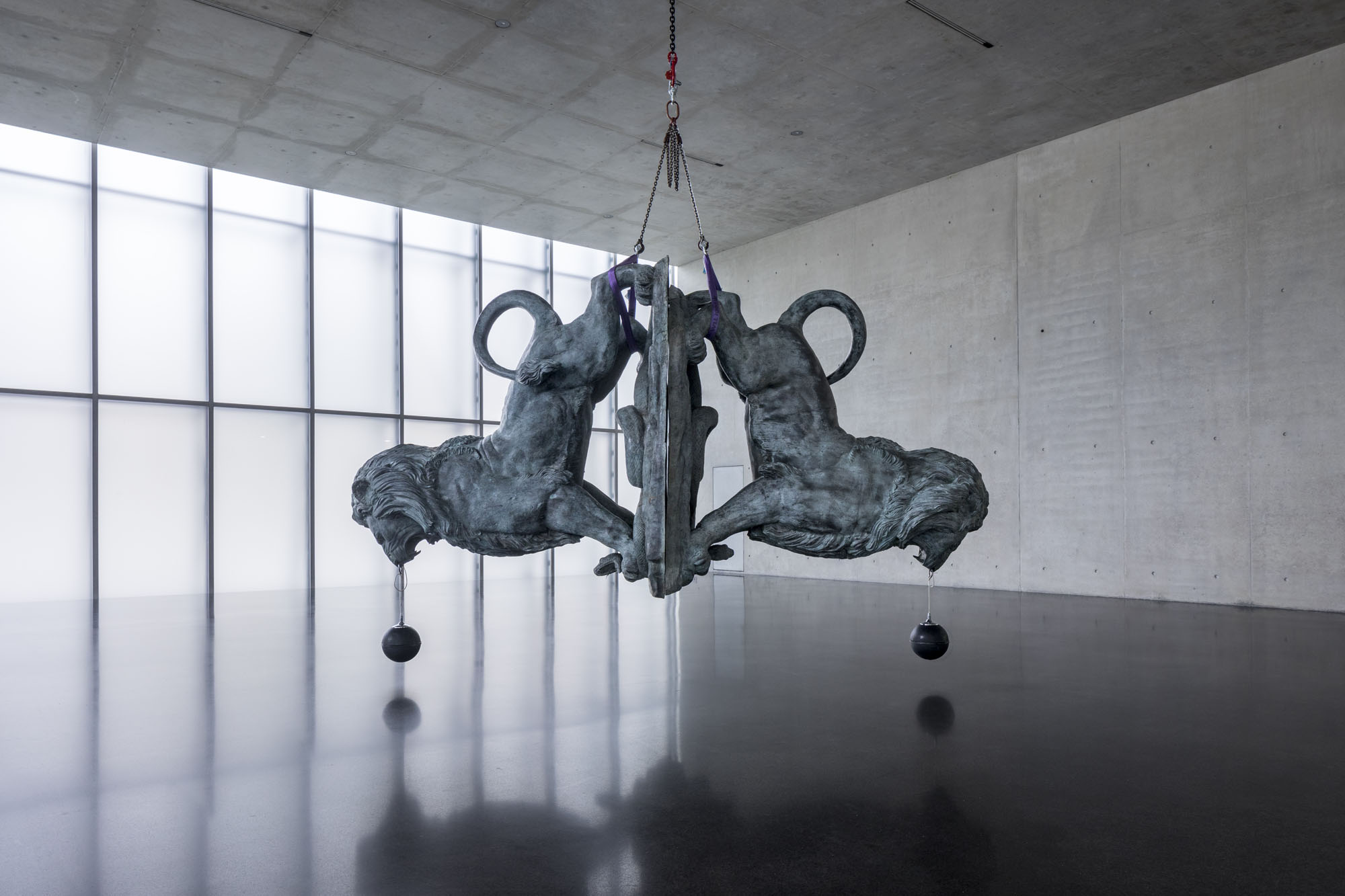
Bellend bin ich aufgewacht
Raphaela Vogel
At Kunsthaus Bregenz, Bregenz, Austria
Photography by Markus Tretter
The lions, a symbol of power and masculinity, open their mouths as if in a piercing cry of pain. They each press powerfully down on a snake’s body with their paws, the serpents stretching their heads out. These are their last stirrings before being mortally clawed by the feline predators. Raphaela Vogel dangles two copies of this monumental sculpture from the ceiling, attaching the weighty bronzes with chains and straps. The colossi hang upside down as if falling, a grotesquely inverted trapeze act. “These strongest creatures in the animal kingdom are also present in front of the Berlin district court,” says Vogel. The two bronze sculptures were probably cast in 19th century Italy. Black spheres hang from their noses, which are, in fact, Audiorama loudspeakers manufactured by Grundig in the 1970s. The voice of Raphaela Vogel emerges from them, singing a song by pop singer Milva; oppressive, gloomy, and lost.
Fears, reflections, and bizarre architectural decoration are all amongst Raphaela Vogel’s recurring creative tools, as is the music that accompanies her installations. Always sweet, wistful melodies, they are played on the accordion or piano, contrasting with weighty structures, kaleidoscopic videos, and massive sculptures.
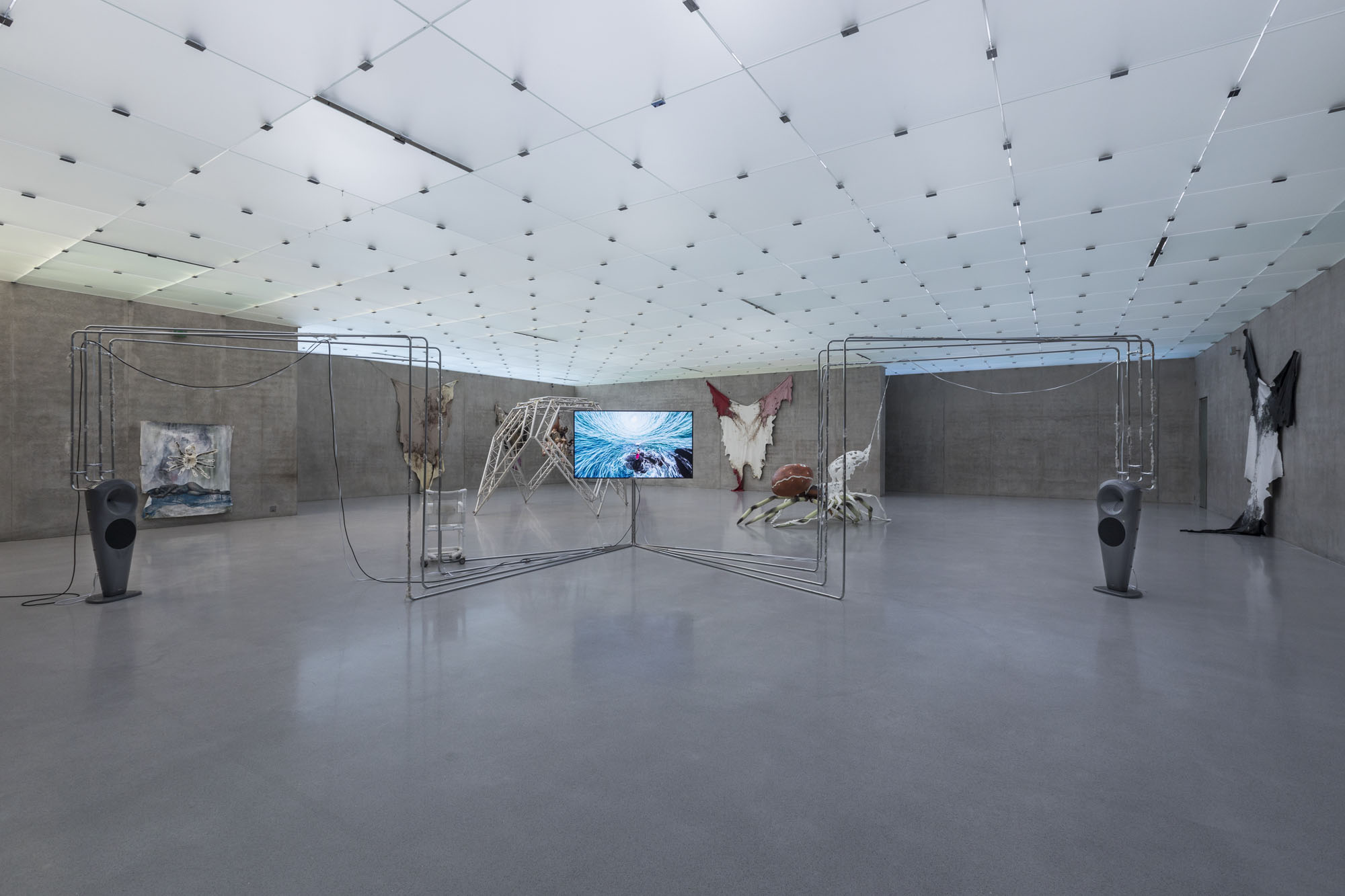
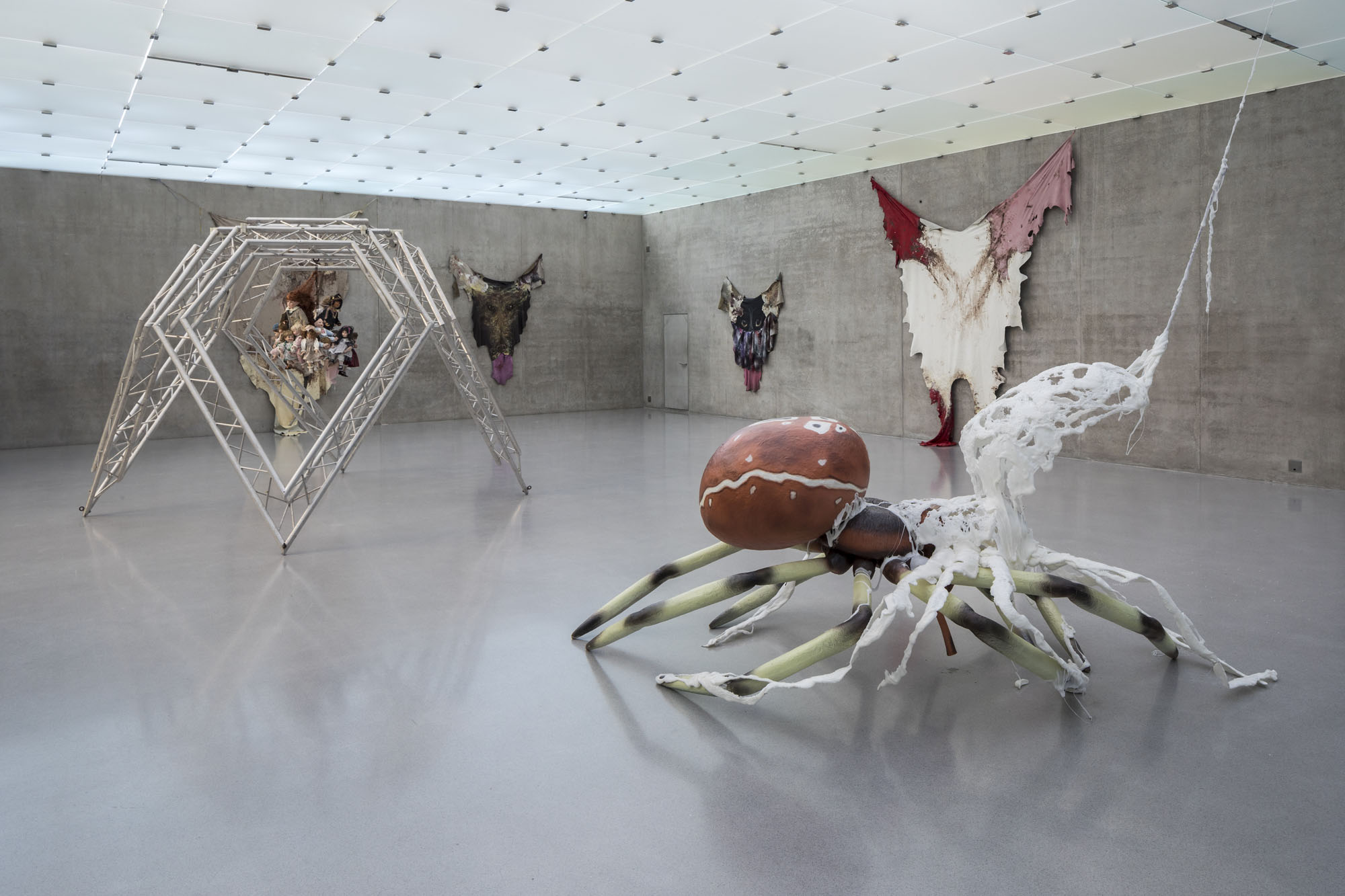
On the first floor Raphaela Vogel is showing spider figures. A cracked plastic shell sits on one of them, like a white skeleton or a skin, making it appear as if the spider is “shedding skin or mating.” Vogelspinne (literally tarantula) — the title of her exhibition at Galerie BQ in Berlin in 2019 where the figures were shown for the first time — is a play on Vogel’s own name and alter ego, evoking a widespread fear of spiders. Surfboard sails have been erected, their colorful plastic sheeting glimmering like mysterious animal eyes. Another construction displays chrome-plated steel struts that form a weblike framework: a spider-like roof structure, from whose gable a bundle of staring dolls hangs. Vogel conveys the viewer into a world of fears, the abysses of desire, loneliness, and hypnosis. She is invested in ideas around “horizontal sculpture,” inspired by Land Art and above all Nancy Holt and her husband Robert Smithson. An HD screen is present that has been combined with aluminum struts that, like tentacles, divide the space into eight sections. Vogel stands on a rock, the spray of a turbulent sea surging around her. Everything spins, the waves have been warped and distorted, the imagery reminiscent of a screensaver that never achieves tranquility. It is a psychedelic, almost mythical scene, a “panorama of the fear of death,” filmed by a drone. The screaming of a baby is audible, slowed to such an extent that the voices whine like sirens, culminating in a noise and once again the voice of the singer Milva, singing Ich hab’ keine Angst (I Have No Fear), accompanied by Edith Clever reciting the “fear of death” scene from Kleist’s The Prince of Homburg.
On the second floor, the artist is showing an installation that was on view at the Berlinische Galerie. The supporting structures of two storage tents interlock. Such rails and steel struts are typical of Vogel’s work, embracing the recycling of disused stages, discos, and defunct adventure parks. The multiple-beam construction forms a tubular space that is entered via a Chinese gate. A polyurethane dragon surrounds the entrance, the ornamentation imitating the moldings of typical Chinese restaurants. At the other end is a screen, tracking Vogel through a tunnel, lying in a bed, filmed from above, in “postcoital fatigue.” This image also spins, provoking states of dizziness and anxiety, whilst the music ripples away. At the end, the protagonist, always portrayed by Vogel herself, is pursued by a drone. The flying spider is a sinister shadow, a technoid tattoo, a crosshair on her body and the landscape.
The top floor houses a work specially developed for Kunsthaus Bregenz. Raphaela Vogel has acquired the remains of a disused miniature model park. The models are weathered and covered in moss: Tower Bridge, the Arc de Triomphe, the Statue of Liberty, Vienna’s Giant Wheel, the Frauenkirche in Dresden, and the Victory Column in Berlin. “The Kunsthaus, too, is a sign, a landmark, and an image for marketing the town.” The replicas are connected by chromed pipes, like supply lines running around a construction site. They lead to a central sculpture consisting of a video projector and loudspeakers, the whole resembling the Atomium in Brussels. A film is being screened, Vogel sings a German interpretation of Nina Simone’s Ain’t Got No, I Got Life from the musical Hair, an array of missing and regained possessions and relationships, a “universal parable, a sort of inventory list of having and not having, an existential debit and credit.”
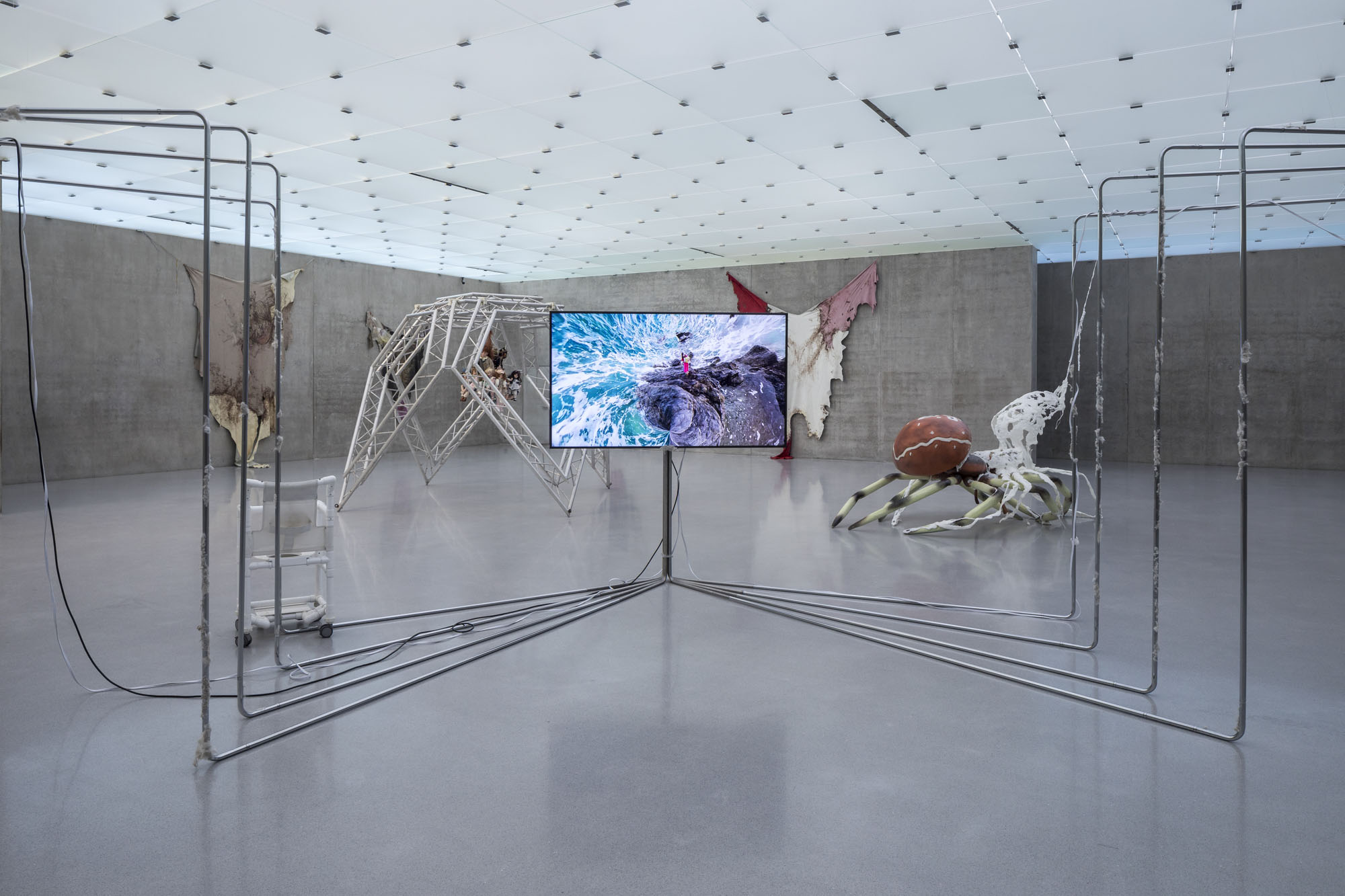
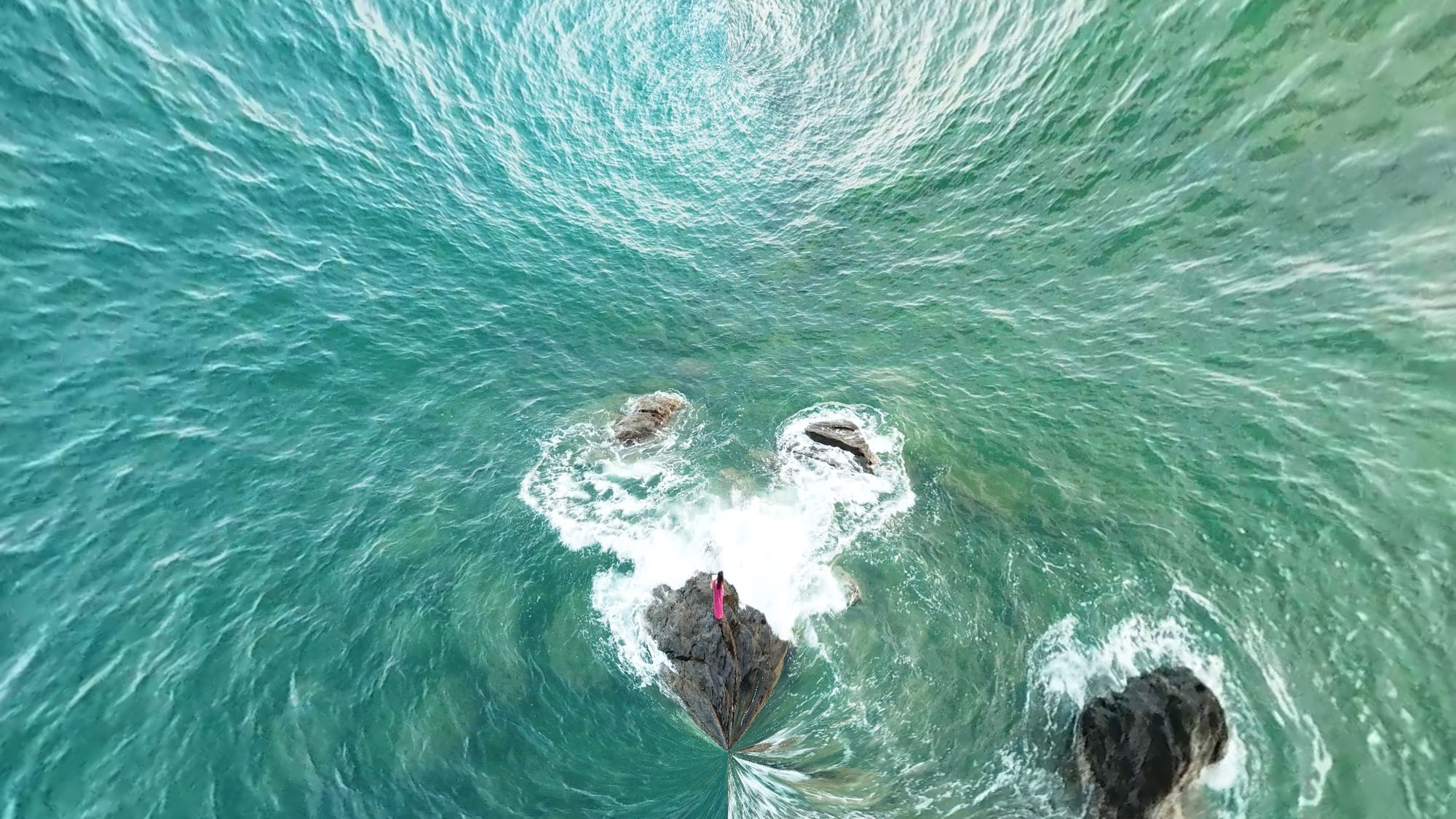
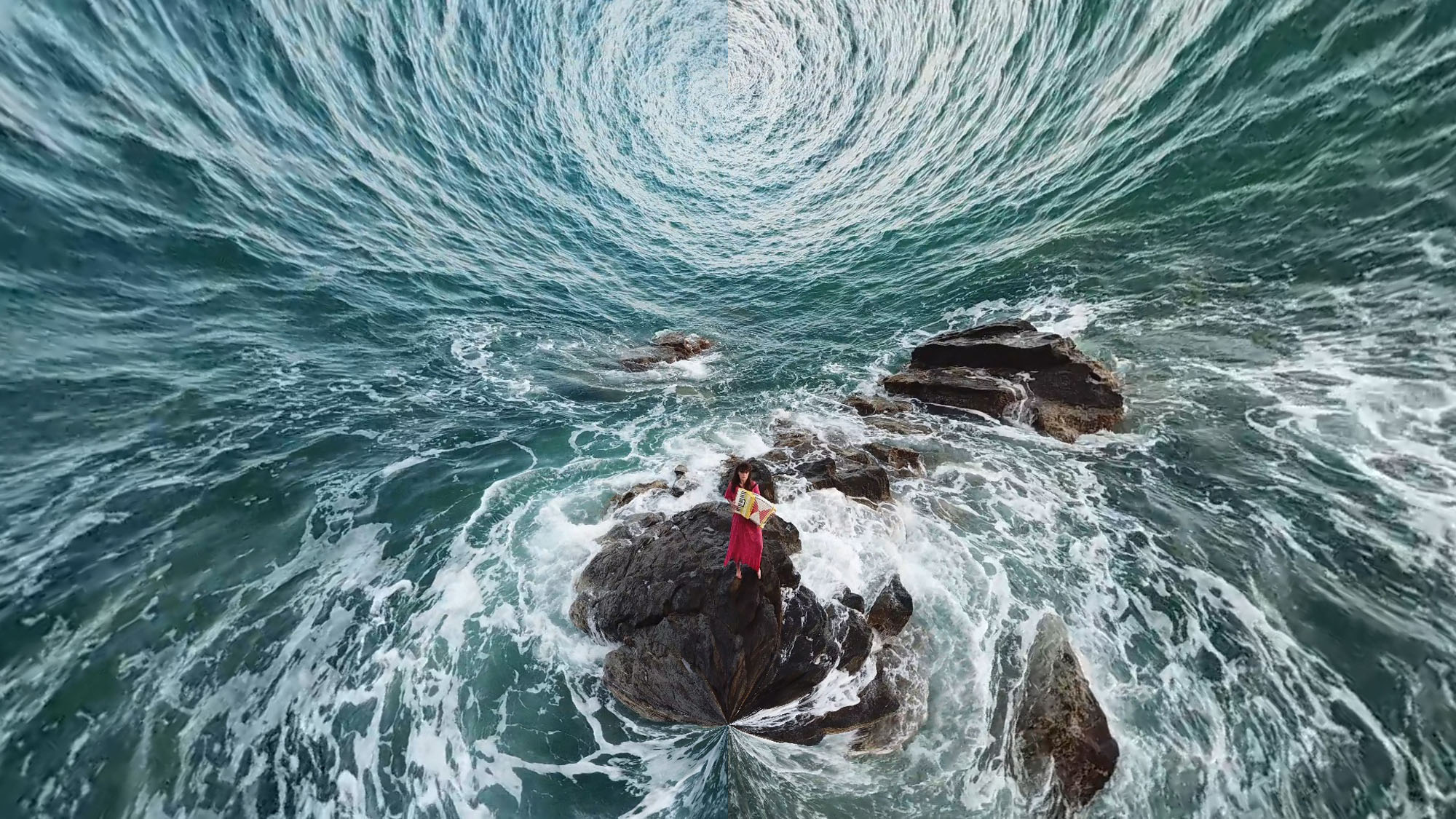
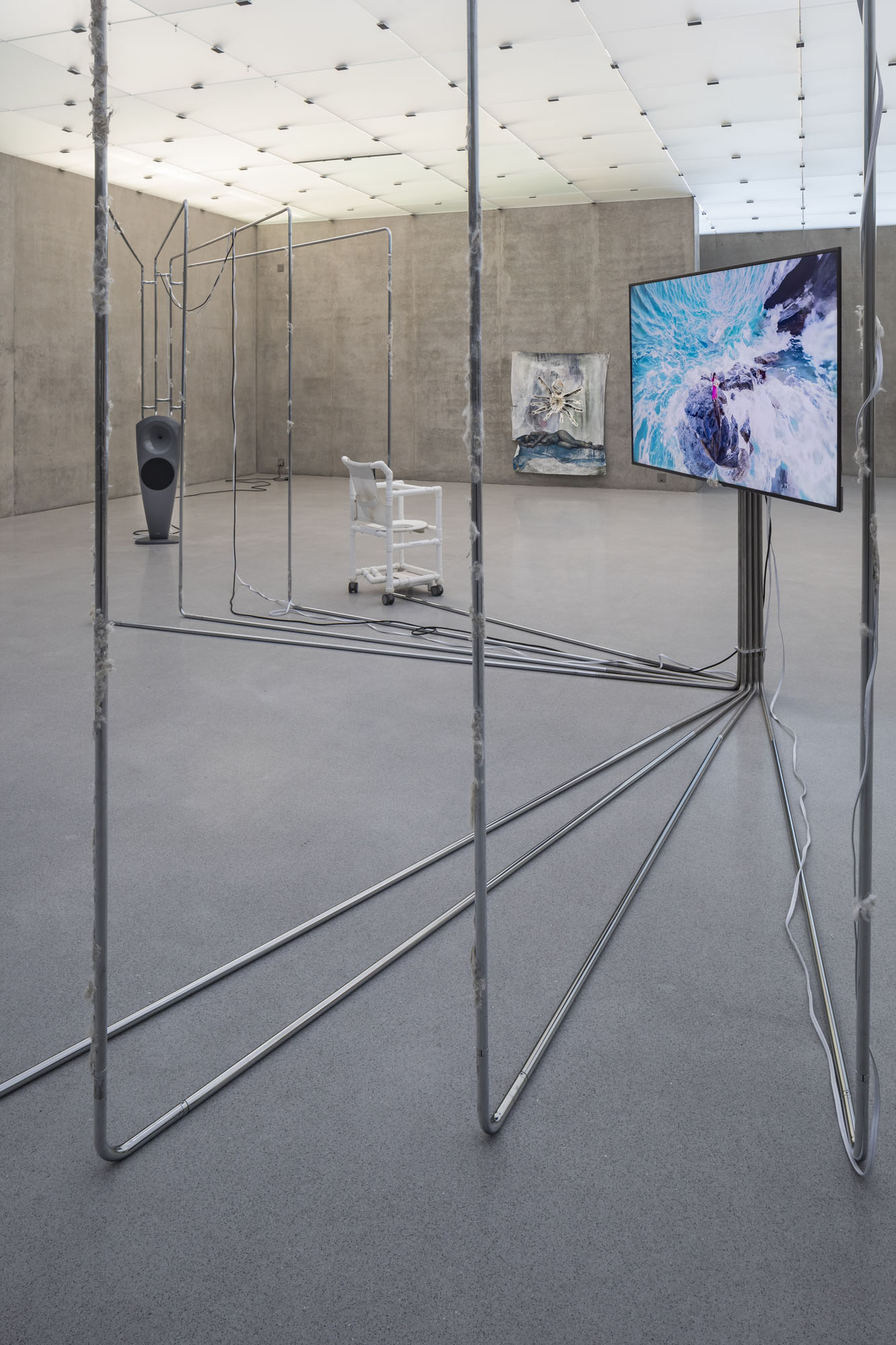
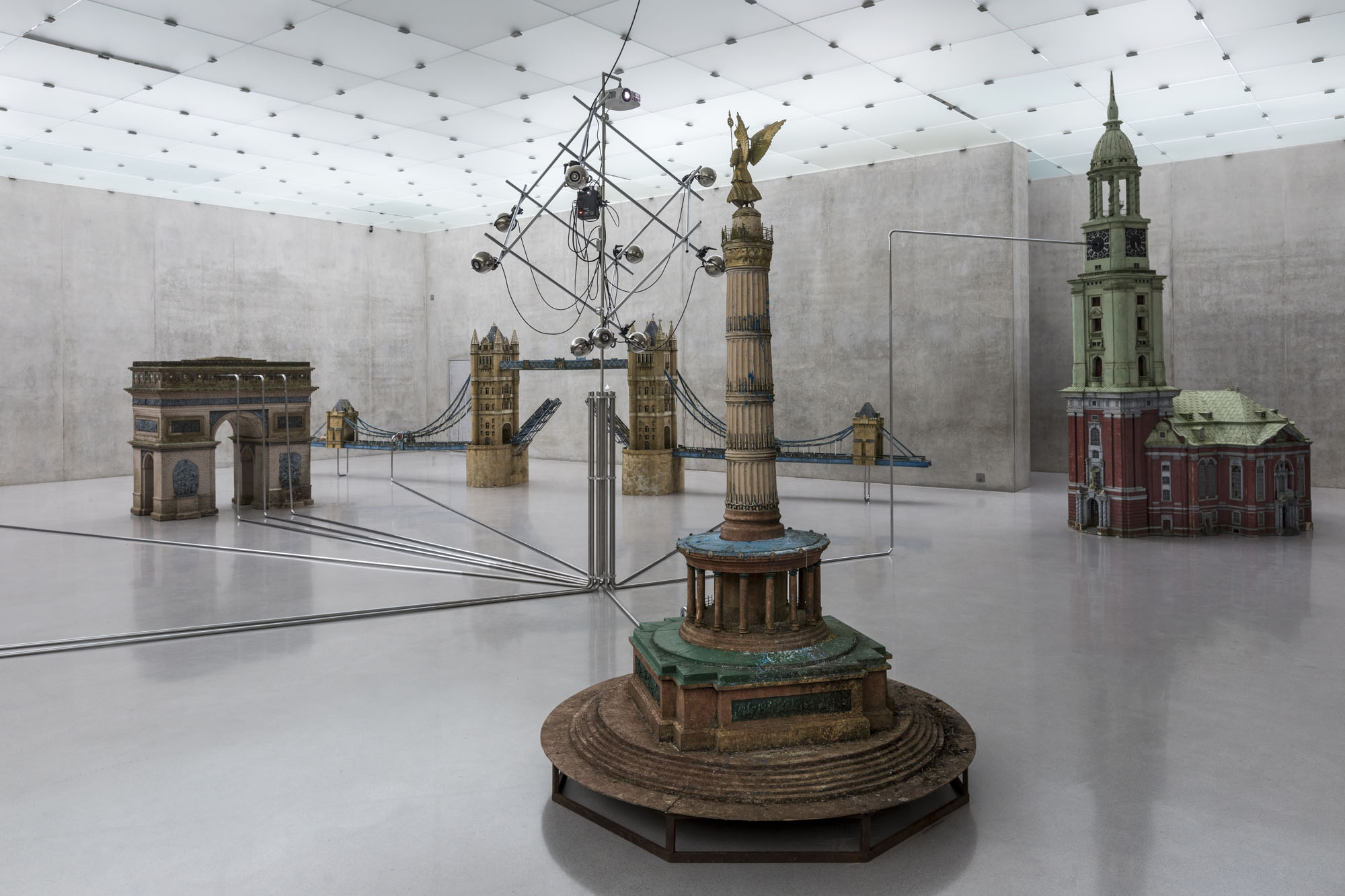
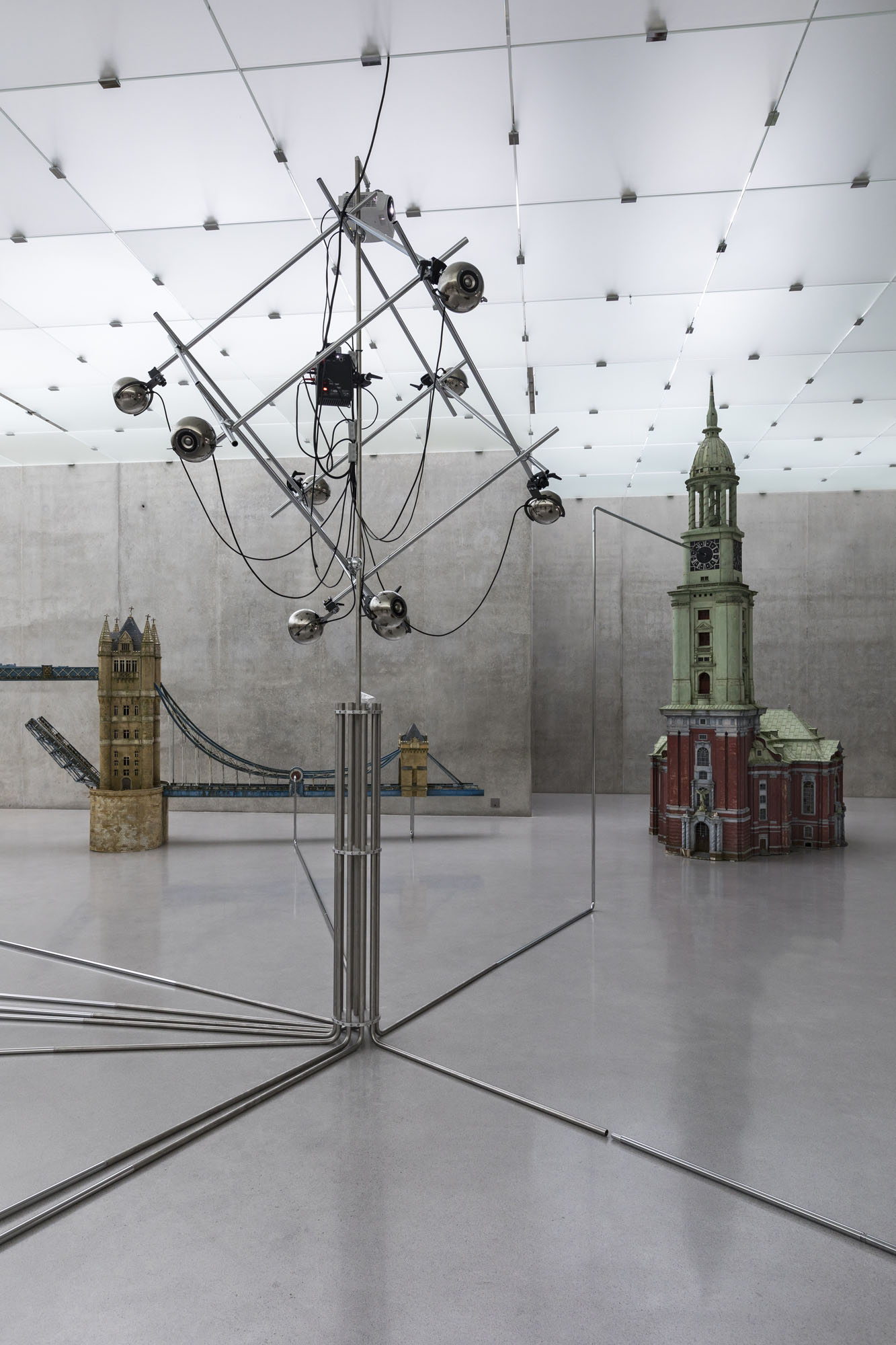
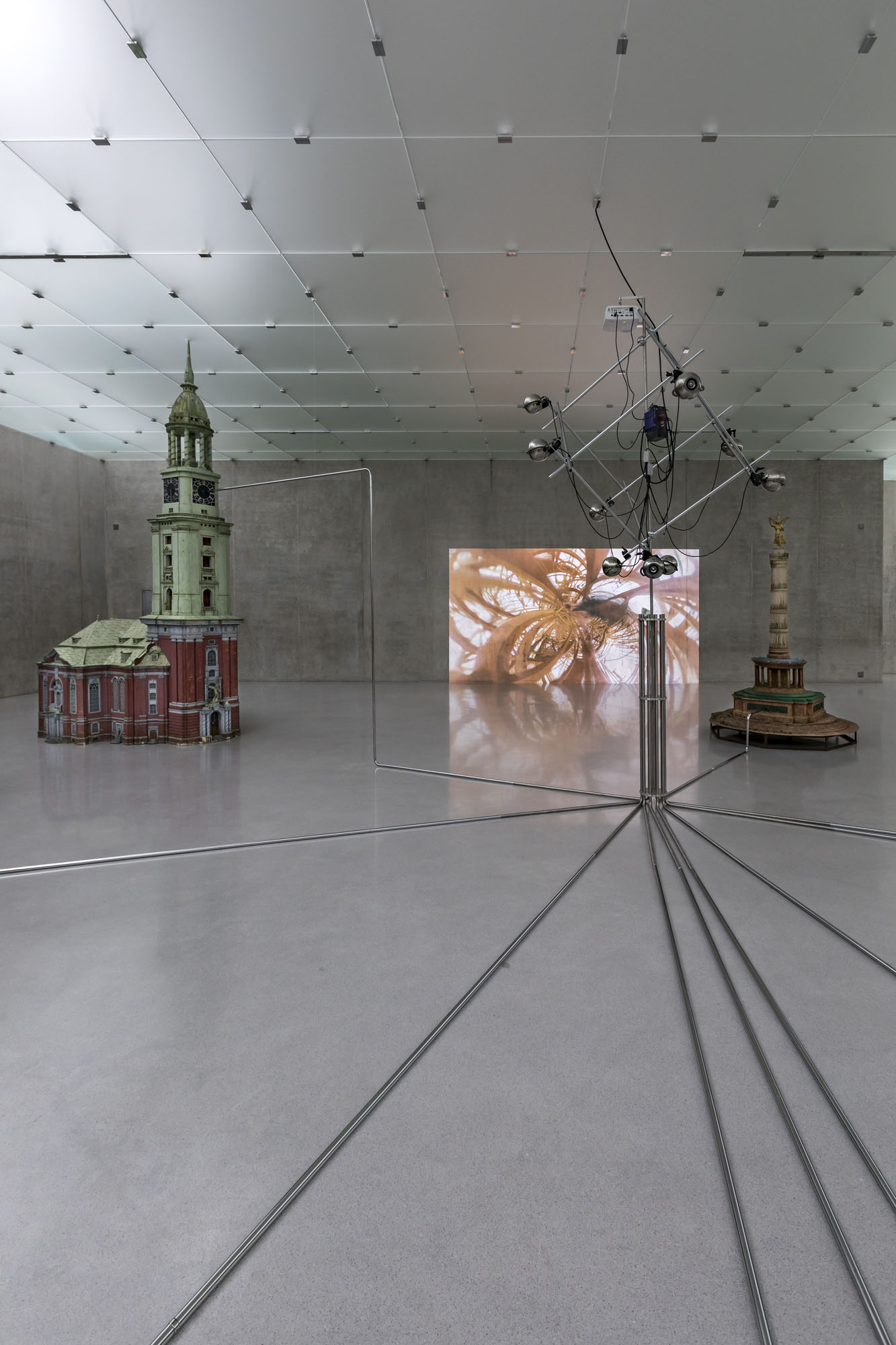
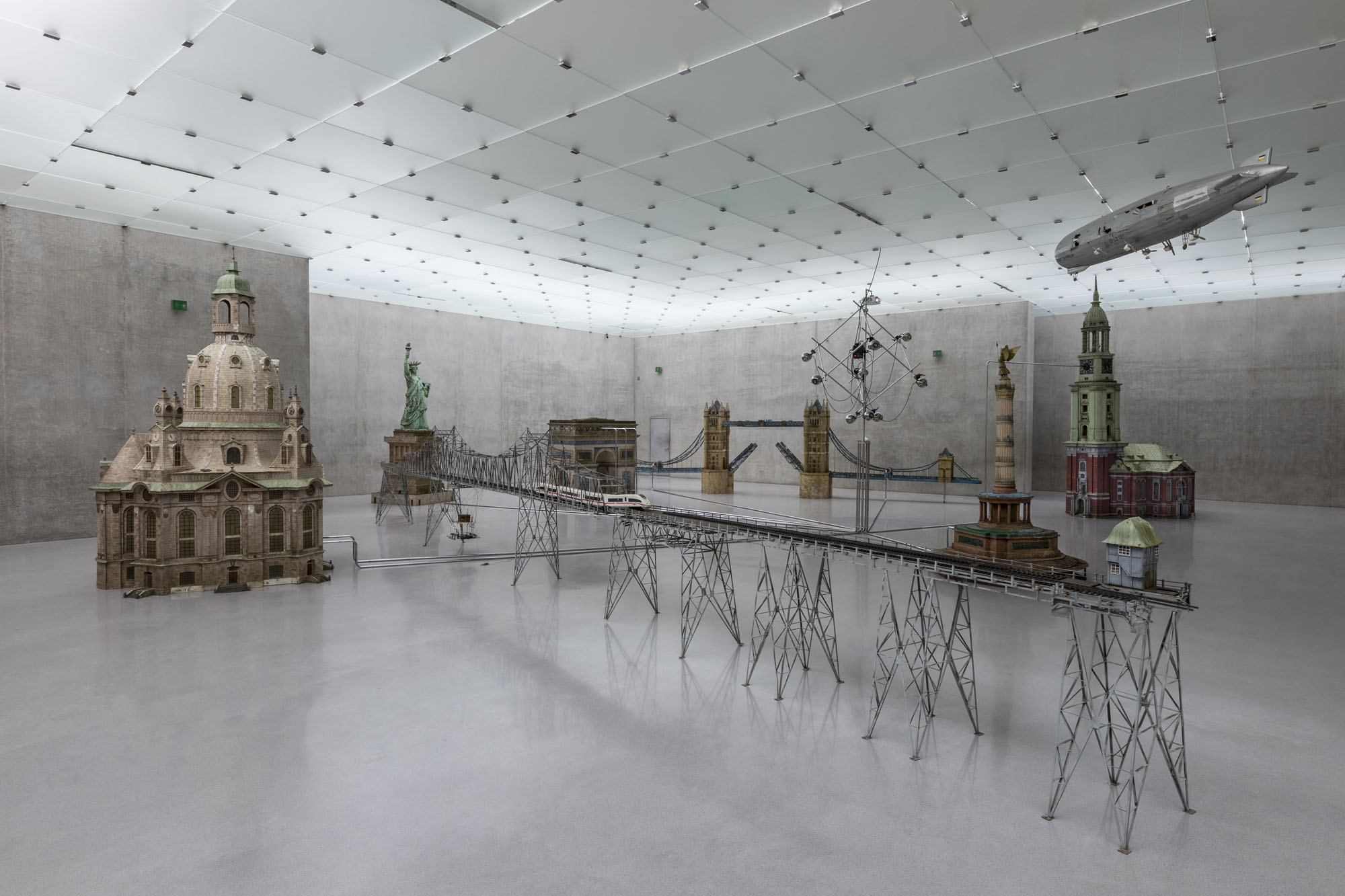
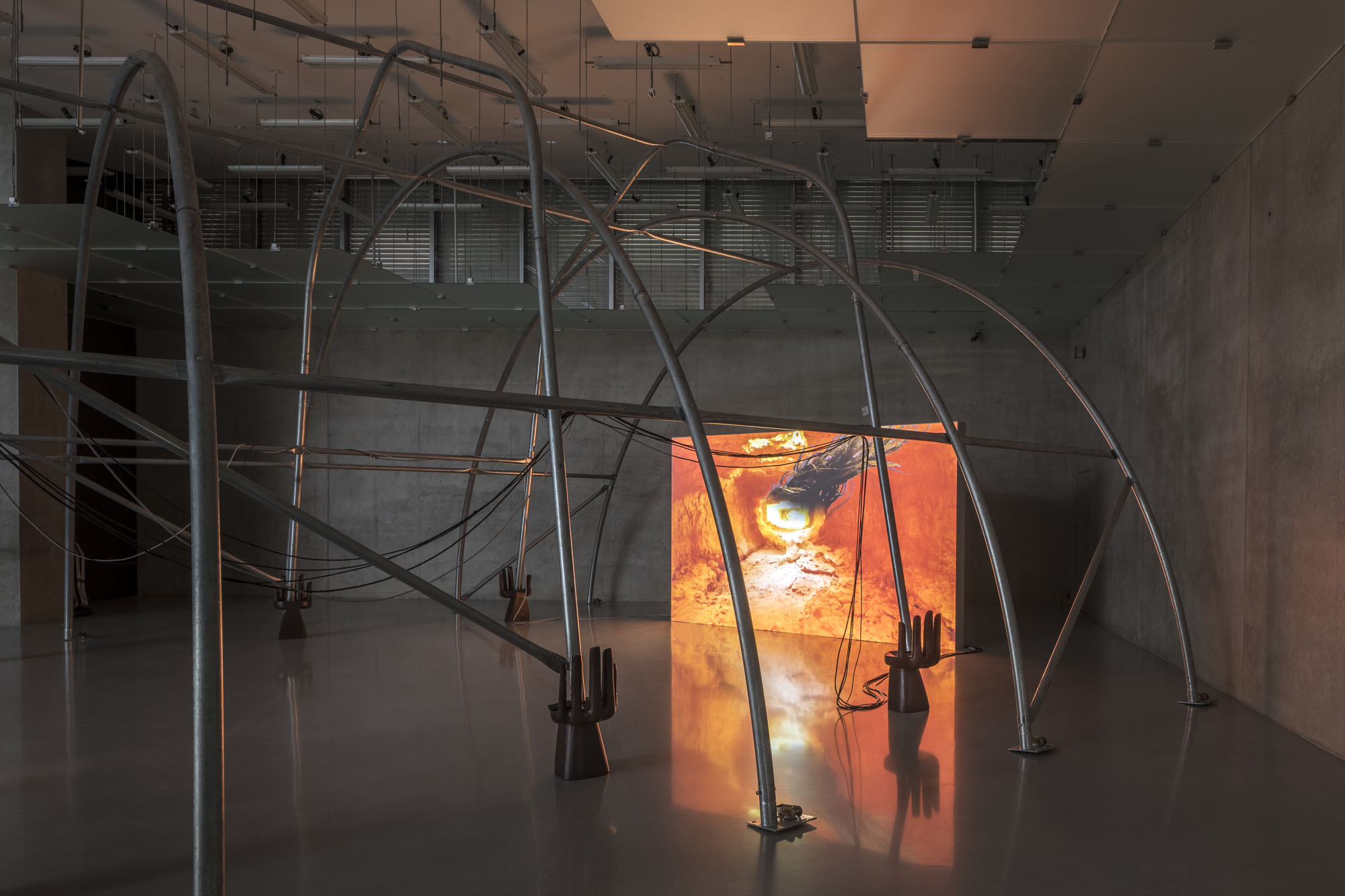
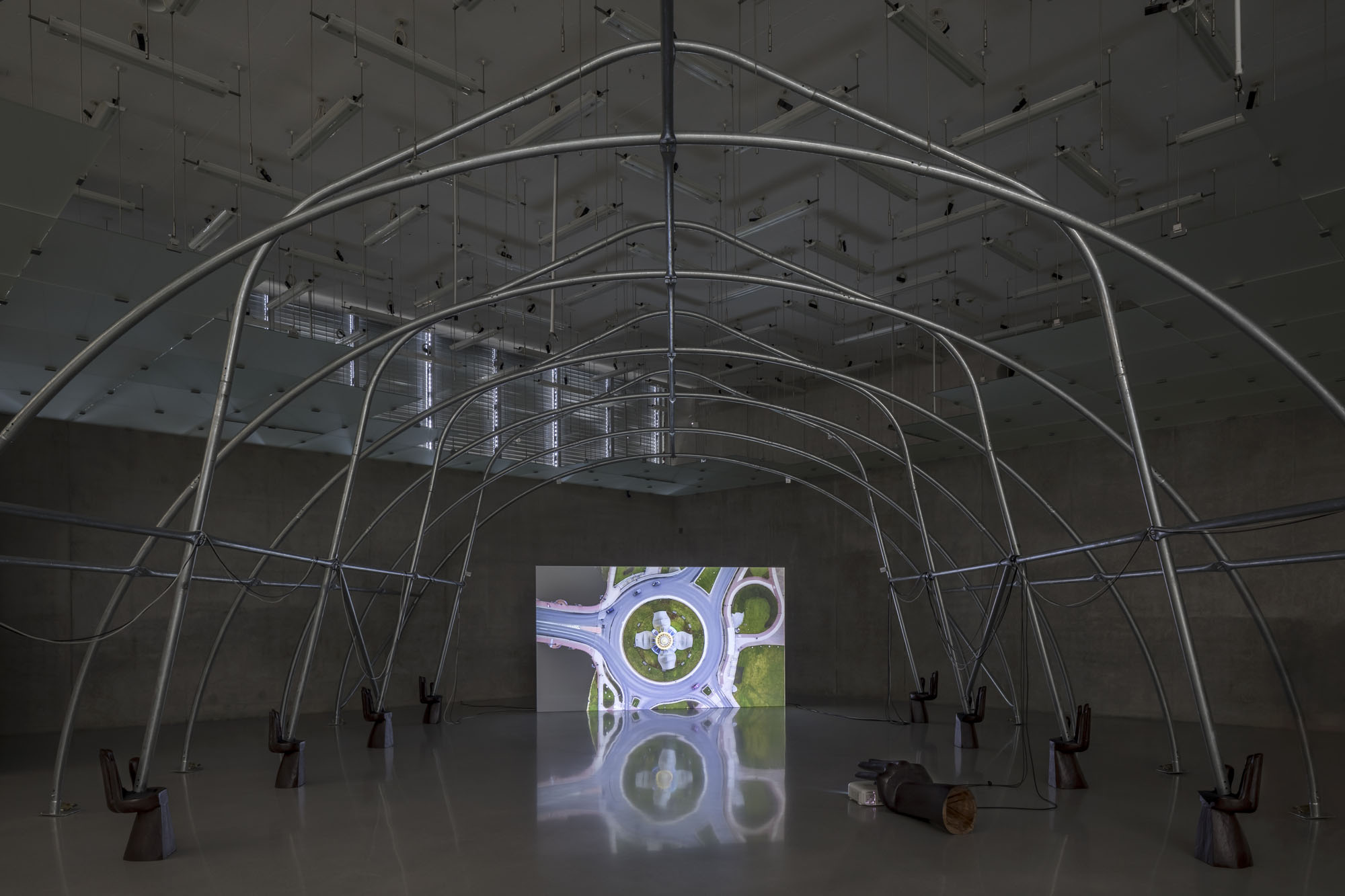
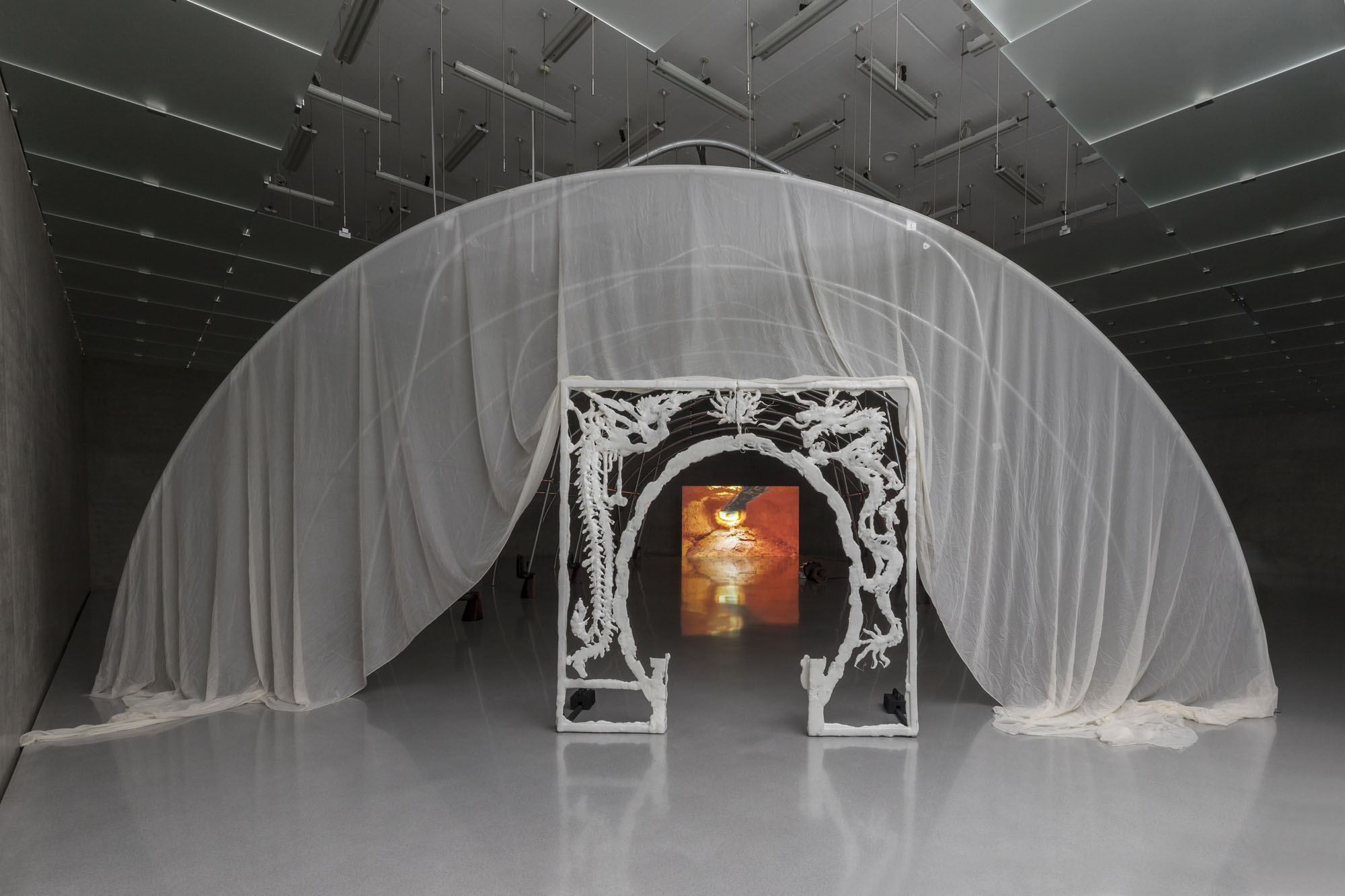
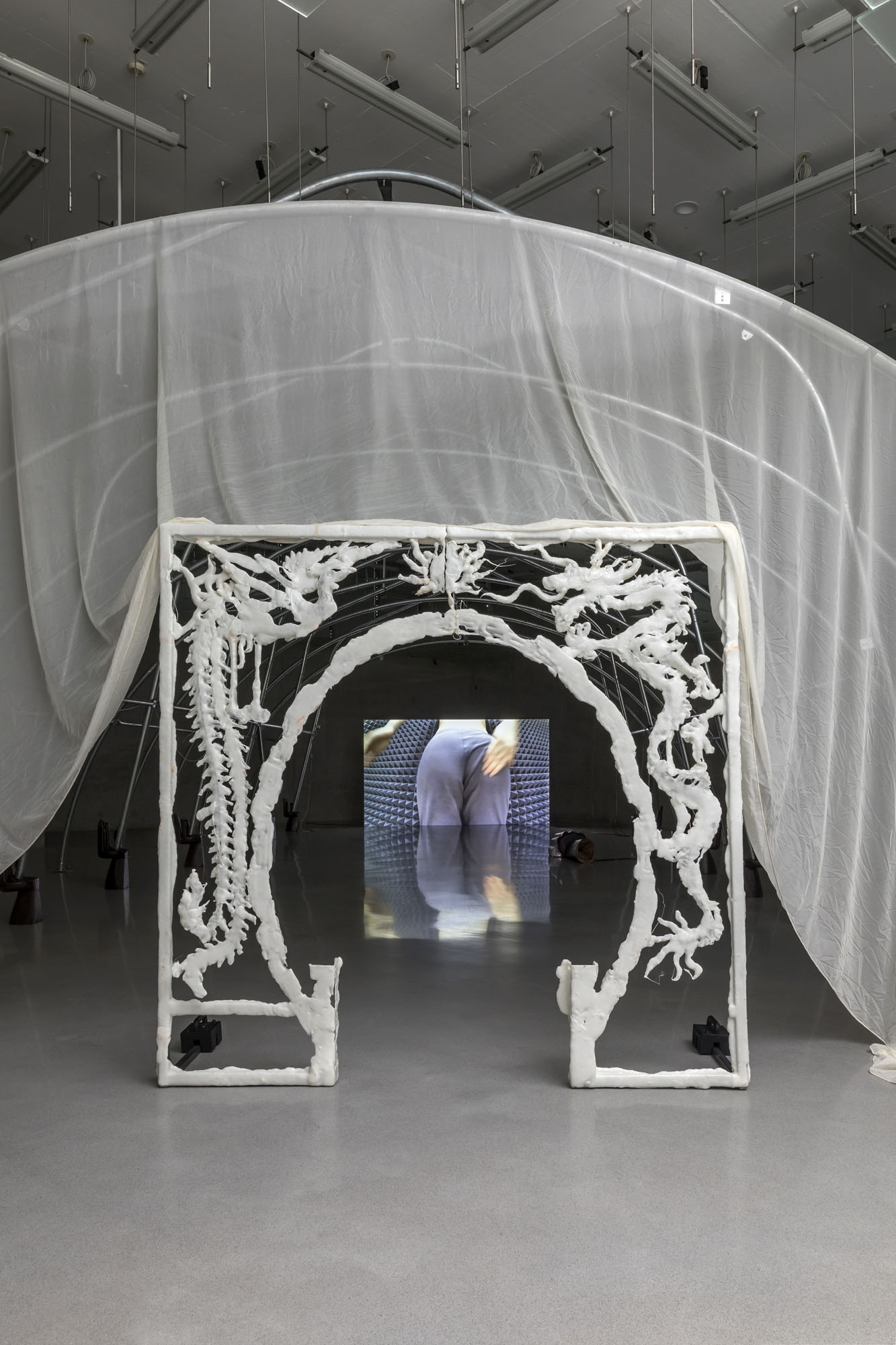
Raphaela Vogel
At Kunsthaus Bregenz, Bregenz, Austria
Previous Articles
OFLUXO is proudly powered by WordPress
